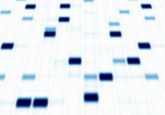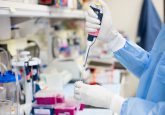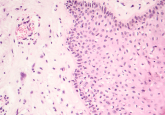New simple test for TB diagnosis in resource-poor countries

According to WHO, almost 10 million people worldwide become ill with TB each year, with 2 million dying from the disease. Southeast Asia and Africa are among the worst-hit regions.
In these resource-limited countries, diagnosis of TB is carried out using a test which is error-prone, complicated and time-consuming. It is also difficult for patients to travel back to clinics to get their results at a later date.
Consequently, chemists have developed a quick and easy diagnostic tool that makes diagnosis simpler, faster and more accurate. This new test began field trials in South Africa in June.
The research will be presented at the 252nd National Meeting & Exposition of the American Chemical Society (ACS).
Patients suspected of having TB in wealthier countries can be examined with a chest X-ray or have a sample of their sputum, or saliva, examined by laboratory techniques such as PCR.
Limited access to resources in developing nations means that suspected cases of TB are often diagnosed using the Ziehl-Neelsen (ZN) test, developed in the 1880s. This test uses an 11-step procedure involving the examination of a saliva sample on a microscope slide, which is dyed and then rinsed multiple times.
Overall, it can take several hours to carry out this test. It has other limitations: “the ZN test is not very sensitive. It misses some cases of TB, and it gives a lot of false positives,” commented Carolyn R. Bertozzi, team leader at the Bertozzi Group, Stanford University (CA, US) .This led Bertozzi and her team to develop a new test for the disease.
The researchers began studying TB 16 years ago, when they were investigating glycolipids in the TB-causing bacteria. It was discovered by the researchers that if slightly modified forms of trehalose were provided to the bacteria, these would be metabolised by the microbes and integrated into their glycolipids.
This was followed by the demonstration by another group of researchers that a fluorescent dye molecule could be added to the trehalose. Unfortunately, this original dye stuck to other components in saliva, making it hard to distinguish bacteria.
This was solved by Bertozzi’s team by adding a dye that doesn’t glow until incorporated into cell walls, removing any background glow.
The new test also has the advantage that only live bacterial cells can metabolise the trehalose/dye molecules, which is not the case for the ZN test, meaning that the test can be used to determine whether a patient’s treatment is working.
The performance of the test in real-world conditions is now being examined.






